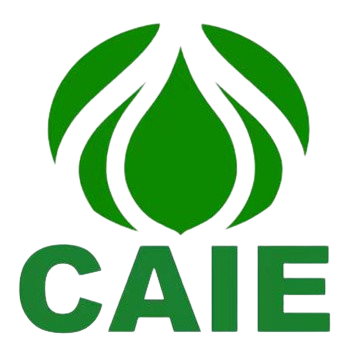Pour ceux qui travaillent dans le domaine des arômes, il est important de comprendre les flux et les reflux de l'industrie des arômes. commerce de gros ail prix par kg/livre est plus qu'une simple compilation de chiffres - il s'agit de rester à l'avant-garde d'un marché aussi piquant et dynamique que le bulbe bien-aimé lui-même. Que vous soyez un importateur chevronné coordonnant des expéditions à travers les continents, un transformateur alimentaire en plein essor développant la prochaine sensation culinaire infusée à l'ail, ou un gastronome curieux souhaitant comprendre l'économie derrière votre ingrédient préféré, ce guide complet vous fournira les connaissances nécessaires pour naviguer dans le monde de la fixation des prix de gros de l'ail.
Les facteurs qui font danser les prix de l'ail : Une équation complexe
Comme toute marchandise échangée à l'échelle mondiale, le prix de l'ail en gros n'est pas statique. Il s'agit d'une danse délicate influencée par une myriade de facteurs, chacun ajoutant sa propre saveur au mélange :
- L'offre et la demande mondiales : Le cœur du problème Comme sur n'importe quel marché, le principe fondamental de l'offre et de la demande règne en maître dans le monde de l'ail. Lorsque la production mondiale d'ail est abondante et que les récoltes exceptionnelles dépassent la demande des importateurs et des transformateurs, les prix ont tendance à baisser, ce qui en fait un marché d'acheteurs. À l'inverse, lorsque des événements météorologiques inattendus, des parasites ou des maladies affectent les récoltes, ou lorsque la demande augmente en raison de nouvelles tendances alimentaires ou de changements saisonniers, les prix peuvent grimper en flèche, laissant les acheteurs se démener pour sécuriser leur approvisionnement.
- L'origine de l'ail : Un monde de variété L'ail n'est pas un produit unique. Les différentes régions du monde possèdent des variétés d'ail uniques, chacune ayant un profil de saveur distinct, des conditions de culture optimales et des coûts de production associés. Ces variations régionales jouent un rôle important dans l'évolution des prix.
- Chine : La puissance de l'ail : La Chine est le géant incontesté de l'ail dans le monde, puisqu'elle représente une part importante de la production mondiale. Ses vastes champs d'ail et son infrastructure d'exportation bien établie lui confèrent une influence considérable sur les prix mondiaux de l'ail. Les fluctuations de la production chinoise, influencées par des facteurs tels que les conditions météorologiques, les décisions de plantation et même les politiques gouvernementales, peuvent se répercuter sur le marché mondial et avoir un impact sur les prix, que ce soit pour les grands importateurs ou les restaurants locaux.
- Autres acteurs clés : Si la Chine domine la scène, d'autres régions productrices d'ail ajoutent leurs propres notes à la symphonie mondiale de l'ail. L'Inde, avec ses variétés piquantes appréciées dans certaines cuisines, l'Espagne, réputée pour son ail à rayures violettes apprécié pour sa saveur robuste, l'Argentine, fournisseur important de l'Amérique du Sud, et même les États-Unis, avec leur secteur de l'ail biologique, plus petit mais dédié, contribuent tous à la chaîne d'approvisionnement mondiale. Les capacités de production, les conditions météorologiques, la stabilité politique et les stratégies d'exportation propres à chaque région ont une incidence sur l'offre globale et, par conséquent, sur les prix à l'échelle mondiale.
- Le facteur saisonnier : Surfer sur la vague des récoltes L'ail, comme de nombreux produits agricoles, suit un cycle de production saisonnier, avec des périodes d'abondance suivies de mois plus maigres. Il est essentiel de comprendre ces cycles pour anticiper les fluctuations de prix et prendre des décisions d'achat stratégiques :
- Saisons de pointe : Les saisons de récolte, généralement à la fin du printemps et au début de l'été dans l'hémisphère nord et inversement dans l'hémisphère sud, voient un afflux d'ail frais sur le marché. Cette abondance se traduit souvent par des prix plus compétitifs, car les fournisseurs cherchent à écouler leurs stocks rapidement. C'est le moment idéal pour les acheteurs de s'assurer des prix favorables, surtout s'ils ont la capacité de stockage nécessaire pour acheter en vrac.
- Mois maigres : Au fur et à mesure que l'année avance et que l'afflux initial d'ail frais diminue, l'ail stocké devient la principale source d'approvisionnement. Les prix peuvent augmenter progressivement au cours de ces mois de vaches maigres en raison de facteurs tels que les coûts de stockage, la détérioration et la diminution de l'offre d'ail frais. Les acheteurs doivent tenir compte de ces hausses de prix potentielles et adapter leurs stratégies d'achat en conséquence, en envisageant éventuellement d'autres formes d'ail ou en étudiant la possibilité de conclure des contrats à terme pour bloquer les prix.
- Grades de qualité : De la norme à la qualité supérieure Tous les bulbes d'ail ne sont pas identiques. Tout comme les pommes, l'ail de gros est souvent classé en différentes catégories en fonction de sa taille, de son aspect et de sa qualité générale. Ces catégories ont une incidence directe sur les prix, les catégories supérieures exigeant des prix plus élevés :
- Grade standard : Cette catégorie comprend généralement des bulbes d'ail qui répondent aux exigences de base en matière de taille et de qualité. Ils peuvent présenter de légères imperfections d'aspect, mais ils conviennent parfaitement à une utilisation culinaire quotidienne dans des plats où l'aspect n'est pas primordial. L'ail de qualité standard est le plus courant et constitue généralement l'option la plus économique.
- Jumbo/Super Jumbo Grade : Pour les applications où la taille est importante, telles que les présentations visuellement attrayantes dans les épiceries ou les restaurants, les bulbes d'ail jumbo et super jumbo sont le meilleur choix. Ces bulbes de taille supérieure se vendent souvent à un prix plus élevé en raison de leur taille impressionnante, de leur rendement plus élevé par bulbe (ce qui signifie moins d'épluchage) et de leur aptitude à être utilisés dans des préparations culinaires spécifiques.
- L'ail biologique : Un choix de première qualité : Reflétant la demande croissante des consommateurs pour les produits biologiques, l'ail biologique, cultivé sans pesticides, herbicides ou engrais synthétiques, occupe un créneau haut de gamme sur le marché. Ce prix élevé reflète les pratiques agricoles écologiques et souvent à forte intensité de main-d'œuvre de l'agriculture biologique.
- Transformation et conditionnement : Ajouter de la valeur (et des coûts) Le parcours de la ferme à l'assiette comporte différents niveaux de transformation et d'emballage, chacun apportant une valeur ajoutée à l'utilisateur final mais contribuant également au prix de gros final de l'ail :
- Bulbes d'ail entiers : Pour les acheteurs qui recherchent l'option la plus économique, les bulbes d'ail entiers sont la solution. Cette forme implique une transformation minimale, se limitant essentiellement au nettoyage et au triage des bulbes après la récolte. Bien que les acheteurs doivent s'occuper eux-mêmes de l'épluchage et de la transformation, ils obtiennent souvent le prix le plus bas par unité d'ail.
- Ail pelé : Pour plus de commodité et pour réduire les coûts de main-d'œuvre, de nombreux acheteurs optent pour des gousses d'ail pré-épluchées. Il n'est donc plus nécessaire d'éplucher l'ail, une tâche qui prend du temps, en particulier pour les grandes entreprises de transformation des aliments ou les restaurants. Toutefois, cette commodité a un prix plus élevé, car elle implique des étapes de traitement supplémentaires et des déchets potentiels.
- Traitement ultérieur : Pour répondre à des applications spécifiques, l'ail peut être transformé sous différentes formes, chacune ayant son propre prix. L'ail en poudre, un aliment de base du garde-manger, et les granulés d'ail, qui offrent une texture plus grossière, sont soumis à des processus de séchage et de broyage, ce qui a un impact sur leur coût final. L'ail haché, qui est prêt à l'emploi, doit être haché et conservé, ce qui augmente le prix total.
Naviguer dans le labyrinthe des prix : stratégies pour les acheteurs
En comprenant les facteurs qui influencent les prix de l'ail, les acheteurs avisés peuvent prendre des décisions éclairées afin d'optimiser leurs stratégies d'approvisionnement et d'obtenir les meilleurs prix possibles :
- Tout est dans le choix du moment : s'aligner sur les tendances du marché
- Monitor Market Reports : Dans le monde du commerce des matières premières, la connaissance est synonyme de pouvoir. Il est essentiel de rester informé des tendances du marché mondial de l'ail, des prévisions de production et des indices de prix pour prendre des décisions d'achat intelligentes. De nombreuses ressources en ligne, des publications sectorielles et des sociétés d'analyse des marchés agricoles fournissent des informations précieuses sur la dynamique de l'offre et de la demande, les tendances des prix et les perturbations potentielles du marché.
- Envisager la passation de marchés à terme : Pour les acheteurs plus importants, tels que les transformateurs de produits alimentaires ou les grands importateurs, la conclusion de contrats à terme avec les fournisseurs peut constituer un outil précieux de gestion des risques. Il s'agit d'obtenir un prix fixe pour une quantité spécifique d'ail à livrer à une date future prédéterminée. Bien qu'elle nécessite une planification et des prévisions minutieuses, la conclusion de contrats à terme peut contribuer à atténuer les risques de volatilité des prix, en particulier sur les marchés sujets à des fluctuations.
- Construire des relations : Le pouvoir du partenariat
- Établir des connexions directes : Dans la mesure du possible, l'établissement de relations directes avec des producteurs d'ail ou des exportateurs réputés peut offrir des avantages considérables. L'approvisionnement direct se traduit souvent par des prix plus compétitifs, car il élimine les intermédiaires et leurs marges. En outre, la communication directe avec les producteurs permet d'obtenir des informations précieuses sur la dynamique du marché, la qualité de la récolte et les difficultés potentielles de la chaîne d'approvisionnement.
- Communication ouverte : La transparence et la communication ouverte sont les pierres angulaires de toute relation commerciale fructueuse, et le commerce de l'ail ne fait pas exception à la règle. Le maintien d'une communication claire et ouverte avec les fournisseurs concernant vos exigences spécifiques en matière de volume, vos attentes en matière de qualité et vos contraintes budgétaires favorise la confiance et permet d'explorer des accords mutuellement bénéfiques.
- La flexibilité est la clé : S'adapter aux évolutions du marché
- Explorer les variétés alternatives : Le monde de l'ail offre une palette variée de saveurs et d'arômes. Une stratégie intelligente consiste à s'approvisionner en différentes variétés d'ail en fonction de la disponibilité, des fluctuations de prix et des besoins culinaires spécifiques. Par exemple, si le prix d'une variété particulière monte en flèche en raison d'une offre limitée, l'exploration d'une variété similaire provenant d'une autre région peut constituer une solution rentable.
- Envisager des produits de substitution : Dans certaines applications, lorsque le profil de saveur spécifique de l'ail frais n'est pas essentiel, l'exploration de produits de substitution peut permettre de réaliser des économies. La poudre d'ail, les granulés ou d'autres formes d'ail transformé peuvent constituer une alternative viable, en particulier dans les aliments transformés ou les plats où la saveur de l'ail est plutôt une note de fond.
Illustration des chiffres : Un aperçu des prix de gros de l'ail
Bien que les prix de l'ail soient en constante évolution, sous l'influence des facteurs évoqués précédemment, il peut être utile d'avoir une idée générale des fourchettes de prix pour établir un budget initial et connaître le marché.
| Type d'ail | Fourchette de prix de gros (USD) |
|---|---|
| Bulbes d'ail entiers | $1.50 - $4.00 par kg |
| Gousses d'ail pelées | $4.00 - $8.00 par kg |
| Ail en poudre | $6.00 - $12.00 par kg |
A noter : Ces prix sont approximatifs et peuvent varier de manière significative en fonction de facteurs tels que la variété spécifique, le niveau de qualité, la région d'approvisionnement, la période de l'année, les conditions du marché et le volume acheté.
L'avenir des prix de l'ail : Un aperçu de l'avenir
Prédire l'avenir d'un produit de base, en particulier d'un produit aussi mondialement commercialisé et influencé par de nombreuses variables que l'ail, est une entreprise complexe. Toutefois, plusieurs tendances émergentes et défis potentiels donnent un aperçu des facteurs qui pourraient influencer les prix de l'ail dans les années à venir :
- Impacts du changement climatique : Alors que le changement climatique continue d'influer sur les régimes climatiques, les rendant moins prévisibles et plus extrêmes, la production d'ail, en particulier dans les régions fortement tributaires de conditions climatiques spécifiques, pourrait connaître des fluctuations plus importantes. Les sécheresses, les inondations et les températures extrêmes peuvent toutes avoir un impact sur les rendements, ce qui pourrait entraîner des perturbations dans la chaîne d'approvisionnement et une volatilité des prix.
- Évolution des préférences des consommateurs : La demande croissante des consommateurs pour des aliments biologiques et produits de manière durable est en train de remodeler le paysage agricole, et l'ail ne fait pas exception à la règle. Cette évolution des préférences des consommateurs est susceptible d'influencer les pratiques de production de l'ail, un plus grand nombre d'agriculteurs pouvant passer à des méthodes biologiques. S'il s'agit d'une tendance positive pour les consommateurs soucieux de l'environnement, elle pourrait également avoir une incidence sur les prix, car l'agriculture biologique implique souvent des coûts de production plus élevés.
- Facteurs géopolitiques : Dans un monde de plus en plus interconnecté, les facteurs géopolitiques jouent un rôle important dans l'évolution de la structure du commerce mondial et des prix des produits de base. Les guerres commerciales, les droits de douane, l'instabilité politique dans les principales régions productrices d'ail et même les pandémies peuvent perturber les chaînes d'approvisionnement, entraînant des fluctuations de prix et des incertitudes sur le marché.

Pourquoi choisir CAIE pour vos besoins en ail en gros ?
En tant que principal fournisseur d'ail de haute qualité provenant de la province de Shandong, en Chine - la plus grande région productrice d'ail au monde -, l'Union européenne a mis en place un système de gestion de l'ail de haute qualité. CAIE offre aux entreprises de transformation des aliments une combinaison unique d'avantages :
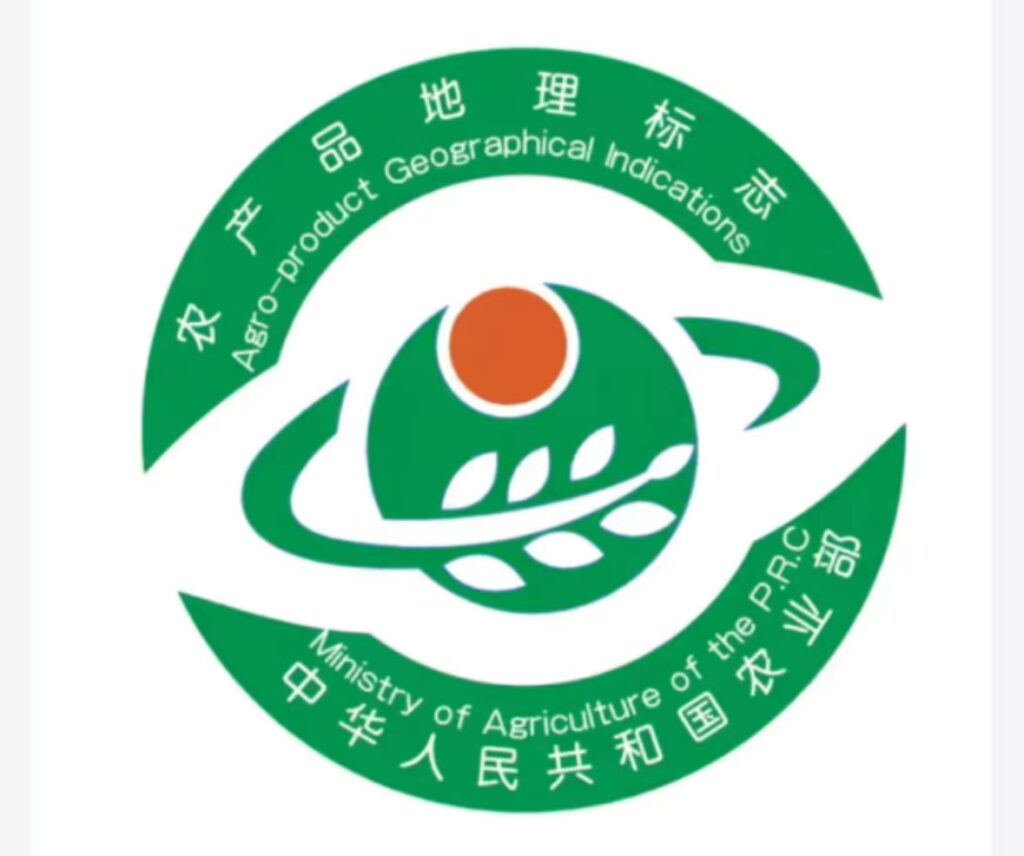

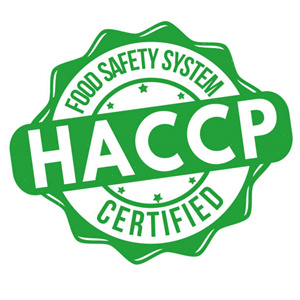
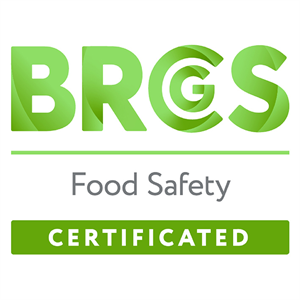
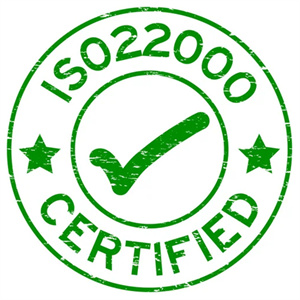
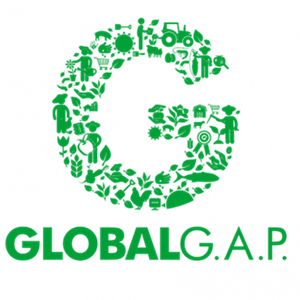
- Un engagement inébranlable en faveur de la qualité : Chez CAIE, la qualité n'est pas négociable. Notre ail est cultivé sur plus de 10 000 acres de fermes appartenant à l'entreprise dans le comté de Jinxiang et la ville de Weifang, conformément aux normes internationales les plus strictes, notamment celles de l'Union européenne, du Japon et des États-Unis. De l'analyse du sol et de la sélection des semences à la plantation en vert et à la récolte, nous exerçons un contrôle méticuleux sur chaque étape de la production afin de garantir une qualité exceptionnelle et une constance de la saveur.
- Fiabilité de l'approvisionnement et de la capacité : Grâce à ses vastes exploitations agricoles, à ses installations de stockage modernes de plus de 100 000 mètres carrés et à son équipe logistique spécialisée dans la zone franche de Weifang, CAIE garantit un approvisionnement régulier et fiable en ail pour répondre aux demandes des plus grands transformateurs de produits alimentaires. Nous proposons des tailles de commande flexibles, des délais de livraison compétitifs et la capacité de traiter efficacement les commandes à grande échelle.
- Expertise et solutions personnalisées : Fort d'une équipe d'experts agricoles et d'une division du commerce extérieur comptant plus de 20 ans d'expérience, CAIE offre une expertise inégalée en ce qui concerne les variétés et les formes d'ail, ainsi que leur adéquation à des applications spécifiques de transformation alimentaire. Nous travaillons en étroite collaboration avec nos clients pour comprendre leurs besoins uniques et développer des solutions sur mesure, depuis l'approvisionnement en types d'ail spécifiques jusqu'à la fourniture d'options de traitement et d'emballage sur mesure.
- Approvisionnement durable et éthique : CAIE s'engage à mettre en œuvre des pratiques agricoles durables et à s'approvisionner de manière éthique tout au long de sa chaîne d'approvisionnement. Nous privilégions les méthodes agricoles respectueuses de l'environnement, les pratiques de travail équitables et la transparence dans nos opérations. En choisissant CAIE, vous obtenez non seulement de l'ail de première qualité, mais vous soutenez également une entreprise qui s'aligne sur vos valeurs.
- Approche partenariale et orientation client : Chez CAIE, nous croyons en l'établissement de partenariats à long terme avec nos clients, fondés sur la confiance, la transparence et le succès mutuel. Notre équipe d'assistance à la clientèle est toujours disponible pour répondre à vos questions, à vos préoccupations et pour vous fournir une assistance continue afin d'assurer votre entière satisfaction.
En conclusion : Rester avisé dans le jeu de l'ail
Pour naviguer dans le monde du prix de gros de l'ail par kg/livre, il ne suffit pas d'aimer ce bulbe piquant, il faut aussi comprendre les forces du marché, être prêt à s'adapter à des conditions changeantes et faire preuve d'un peu d'esprit d'entreprise. En restant informées des tendances du marché, en établissant des relations solides avec les fournisseurs, en adoptant des stratégies d'approvisionnement flexibles et en gardant un œil sur l'horizon pour déceler les nouveaux défis et les nouvelles opportunités, les entreprises peuvent incorporer avec succès cet ingrédient essentiel dans leurs activités tout en s'assurant qu'elles en ont pour leur argent - ou devrions-nous dire, pour leur clou de girofle ?
